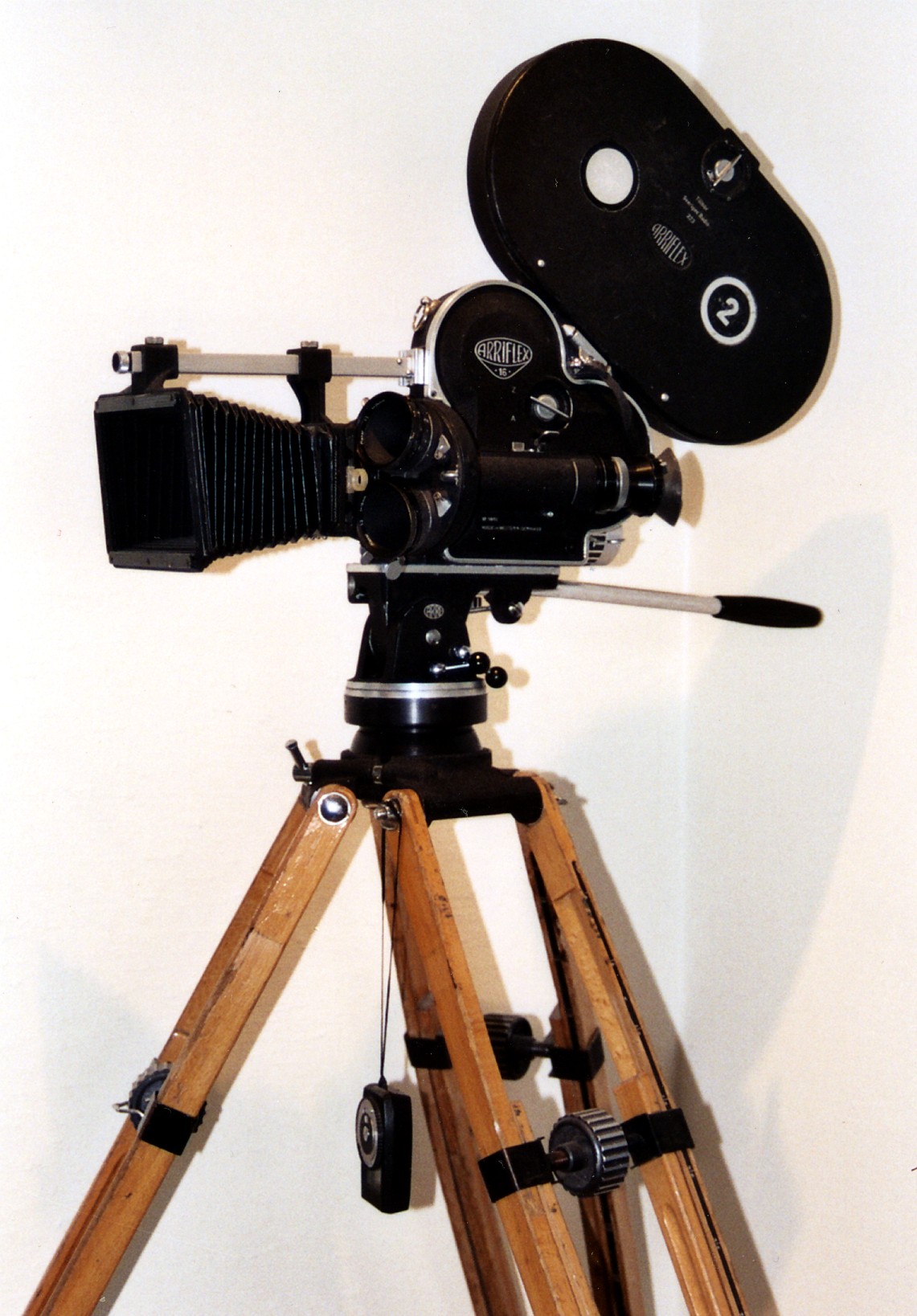Arriflex 16ST on:
[Wikipedia]
[Google]
[Amazon]
 The Arriflex 16ST, also Arriflex 16S, is a
The Arriflex 16ST, also Arriflex 16S, is a
 Like earlier models, the ARRI 16ST was built around the spinning reflex twin-bladed "butterfly" mirror shutter designed by
Like earlier models, the ARRI 16ST was built around the spinning reflex twin-bladed "butterfly" mirror shutter designed by
Manual
The History of ARRI in a Century of Cinema
Movie cameras
 The Arriflex 16ST, also Arriflex 16S, is a
The Arriflex 16ST, also Arriflex 16S, is a 16mm
16 mm film is a historically popular and economical gauge of film. 16 mm refers to the width of the film (about inch); other common film gauges include 8 and 35 mm. It is generally used for non-theatrical (e.g., industrial, educ ...
MOS production motion picture camera
A movie camera (also known as a film camera and cine-camera) is a type of photographic camera that rapidly takes a sequence of photographs, either on an image sensor or onto film stock, in order to produce a moving image to project onto a movie sc ...
released in 1952 by ARRI
The Arri Group () is a German manufacturer of motion picture film equipment. Based in Munich, the company was founded in 1917. It produces professional motion picture cameras, lenses, lighting and post-production equipment. Hermann Simon menti ...
. The camera utilizes a voltage of 8.4 volts DC
Function
 Like earlier models, the ARRI 16ST was built around the spinning reflex twin-bladed "butterfly" mirror shutter designed by
Like earlier models, the ARRI 16ST was built around the spinning reflex twin-bladed "butterfly" mirror shutter designed by Erich Kästner
Emil Erich Kästner (; 23 February 1899 – 29 July 1974) was a German writer, poet, screenwriter and satirist, known primarily for his humorous, socially astute poems and for children's books including '' Emil and the Detectives''. He received ...
, chief engineer at Arnold & Richter Cine Technik (ARRI), Arri Group, set at 45 degrees horizontally to the lens axis. It uses a 3-lens turret with ARRI standard mounts. The viewfinder
In photography, a viewfinder is what the photographer looks through to compose, and, in many cases, to focus the picture. Most viewfinders are separate, and suffer parallax, while the single-lens reflex camera lets the viewfinder use the main ...
is located on the gate door. The design is very similar to the Arriflex 35
The Arriflex 35, released by Arri in 1937, was the first reflex 35mm production motion picture camera.
Function
It was built around the spinning reflex twin-bladed "butterfly" mirror shutter designed by Erich Kästner, chief engineer at Arnold & ...
.
The Arriflex 16ST can load 100ft daylight spools internally and a 400ft external magazine can be attached to the top. The camera is driven by a 12V crystal control motor, which can be controlled on the right side. It can record between 8 and 48 fps. The motor also has a reverse mode, which can be used for double exposure for example.
The standard matte box
In photography and videography, a matte box is a device attached to the end of a lens in order to prevent light leakage. It performs and mounts essentially the same as a lens hood, but usually includes adjustable fins called ''French flags''.
A ...
is adjustable in length to fit the different focal lengths of the lenses.
This 16mm camera was one of ARRI's most popular designs; over 20,000 were sold. The "ST" (for ''standard'') was added later to distinguish it from other 16mm Arri cameras.
Arriflex 16M
The Arriflex 16M is a model released in 1960, similar from a technical point of view to the 16ST, but only using 400ft magazines.References
{{ReflistExternal links
Manual
The History of ARRI in a Century of Cinema
Movie cameras